Comments by hkano275
Thank you for your advice.
The numbers written here are not considered promotion.
A Pawn will almost always be promoted to a Queen, so the value of the Queen to which it is promoted will increase by more than this number. The value of the Pawn will increase also.
I do not the reason until now. I will think about this problem.
I am now thinking about the difference about meaning of VALUE, COST and PRICE so on.
The figures of value may correspond to the figures of cost that considered about CORRECTION.
It has a possibility that COST is more intrinsic property than VALUE.
My material costs' calculation corresponds to correctness of mathematical quantities.
My calculation can adapt to various pieces.
I have already confirmed that the calculation is corresponding the quantities of pieces' cost on square board and on hexagonal board.
I want explain other pieces of my calculation.
Wazir=4
Ferz=2
Dabbaba=2
Alfil=2
Threeleaper=4
Camel=4
Zebra=8
Tripper=2
Pawn(Shogi)=1
Gold General=5
Silver General=3
King+Bishop=10
King+Rook=12
Cannon=5
Queen(Q)=16(⇒18)
Pawn(P)=1(⇒2)
Bishop(B)=6
Knight(N)=6
Rook(R)=10
I am now thinking about differences of cost, price and value.
I can compare these terms to economics language.
Cost is a cost.
Price is a list price.
Value is the proceeds.
So this formula is made up.
[Price]=[Cost]×(1+[Profit Ratio])
[Value]=[Price]×(1-[Discount Ratio])
Value≈Price≥Cost
0≤Profit Ratio≤1
0≤Discount Ratio≤1
These two ratio are a correction changing in various situation.
Profit Ratio
Pawn=100%
Archbishop=37.5%~45.8%
Queen=12.5%~18.75%
Bishop-pairs=8.3%
I am confusing to use 'start design wizard' of Interactive diagrams. How can I use pieces which have space in their name such as 'asian pawn' or 'dragon king'?
Material cost is the cost of pieces, or used in a specific situation by summoning unit for some card games. If one of material costs is higher than another piece, this one is more powerful, but heavier than another. Another way of saying, one which has a low material cost, it is more light and movable, and easy to exchange for higher costs. For example, material costs(Material Cost) of knight is 6. ,the pawn have 1 material.
How is calculating material costs mathematically.
Let’s suppose a checked board in your hands. Adjust it to 7×7 squares.
(a1,a3,a5,a7,b2,b4,b6,c1,c3,c5,c7,d2,d4,d6,e1,e3,e5,e7,f2,f4,f6,g1,g3,g5,g7)=|A|
(a2,a4,a6,b1,b3,b5,b7,c2,c4,c6,d1,d3,d5,d7,e2,e4,e6,f1,f3,f5,f7,g2,g4,g6)=|B|
+—+—+—+
|c1|b1|a1|
+—+—+—+
|c2|b2|a2|
+—+—+—+
|c3|b3|a3|
+—+—+—+
|A| and |B| are an assembly element.
Put a piece you want calculate on the d4 central. You can analyze movements of the piece to a part. And you can apply this movements into each squares, (ranks and files). These motion elements are parted into Leap, Ride, Hurdle, Capture only and Move only.
In particularly, the special ability which have various pieces, for example warp, is regarded as special ability elements, these are stood for a letter .
The following list are symbols of the elements.
Ⓛ: Leap Ⓡ: Ride ☐: Hurdle ×: Capture only △: Move only A: Capture without move B: Muti-capture without move I: Imitate R: Revolution S: Summon T: Turn around X: Stop Y: Warp
All elements are able to calculate, a pawn with one step orthogonal capture and one step diagonal move, in this situation pawn cannot move double step at the initial movement, which have △ in d3 and × in c3, e3. So, the following expression is made up.
Pawn=(△)•(d3)+(×)•(c3)+(×)•(e3)
A king moves one step orthogonally and diagonally, it means Ⓛ in c3, c4, c5, d3, d5, e3, e4, e5.
King=(Ⓛ)•(c3)+(Ⓛ)•(c4)+(Ⓛ)•(c5)+(Ⓛ)•(d3)+(Ⓛ)•(d5)+(Ⓛ)•(e3)+(Ⓛ)•(e4)+(Ⓛ)•(e5)
Next, I want show a list of the operation process numbers.
(|A|)=1/2 (|B|)=1 (Ⓛ)=1 (Ⓡ)=1/2 (☐)=1/2 (×)=1/2 (△)=1/2 (A)=1 (B)=2 (I)=1 (R)=1 (S)=2 (T)=1 (X)=1 (Y)=1
Next, I want explain for calculation of material cost about Rider.
In general, rider is known as a series of same direction leaps as far as the board will allow, each of which must be to an empty spaces.
Well, which the initial step of rider is the some of Leap or Ride, et cetera. It is possible that both Leap and Ride. In case of general rider; bishop and rook, the initial step is Leap. In case of circular rider; rose, the initial step is Ride.
As well, rider that move by crawling under ground; bishop, rook or queen, and another type of rider that move by interval jumping; nightrider, exist. The first type of rider is calculated by 11×11 squares checked board, and second type of rider is by 13×13.
(a1,a3,a5,a7,a9,a11,b2,b4,b6,b8,b10,c1,c3,c5,c7,c9,c11,d2,d4,d6,d8,d10,e1,e3,e5,e7,e9,e11,f2,f4,f6,f8,f10,g1,g3,g5,g7,g9,g11,h2,h4,h6,h8,h10,i1,i3,i5,i7,i9,i11,j2,j4,j6,j8,j10,k1,k3,k5,k7,k9,k11)=|A|
(a2,a4,a6,a8,a10,b1,b3,b5,b7,b9,b11,c2,c4,c6,c8,c10,d1,d3,d5,d7,d9,d11,e2,e4,e6,e8,e10,f1,f3,f5,f7,f9,f11,g2,g4,g6,g8,g10,h1,h3,h5,h7,h9,h11,i2,i4,i6,i8,i10,j1,j3,j5,j7,j9,j11,k2,k4,k6,k8,k10)=|B|
The central is f6.
I want to explain the calculation for rook.
Ⓛ in e6, f5, f7, g6. Ⓡ in a6, b6, c6, d6, f1, f2, f3, f4, f8, f9, f10, f11, h6, i6, j6, k6
Rook=(Ⓛ)•{(e6)+(f5)+(f7)+(g6)}+(Ⓡ)•{(a6)+(b6)+(c6)+(d6)+(f1)+(f2)+(f3)+(f4)+(f8)+(f9)+(f10)+(f11)+(h6)+(i6)+(j6)+(k6)}
Super Symmetry Correction; SSC, for the type of Knights and Nightrider. Knight and nightrider have 9 symmetries and this is maximum numbers.So, you can correct these material costs.
(SSC)=-2
Pawn=1 King=6 Queen=16 Bishop=6 Knight=6 Rook=10
Wazir=4
Ferz=2
Dabbaba=2
Alfil=2
Threeleaper=4
Camel=4
Zebra=8
Tripper=2
Pawn(Shogi)=1
Gold General=5
Silver General=3
Crowned Bishop=10
Crowned Rook=12
Cannon=5
My Original New Shogi
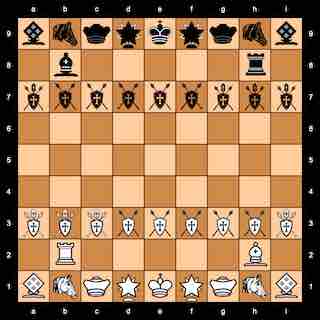
Transformed Side
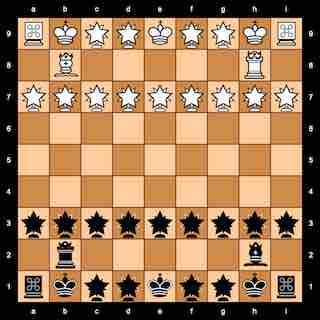
King

Soldier

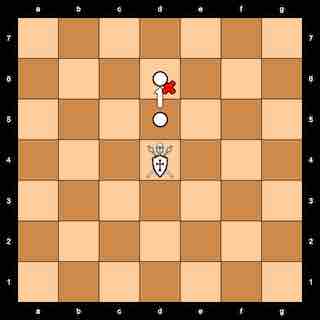
General
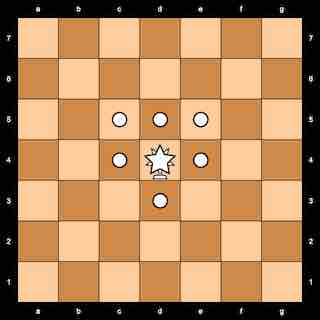
Admiral
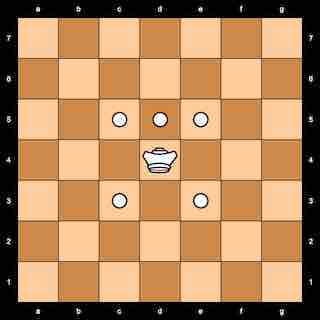
Cavalry
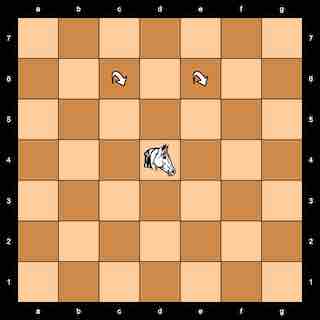
Knight

Bishop
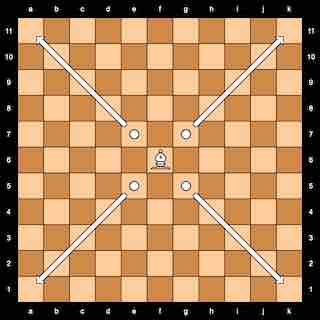
Inquisitor
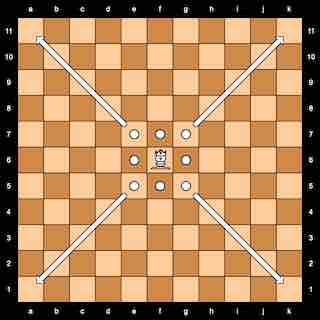
Barrier
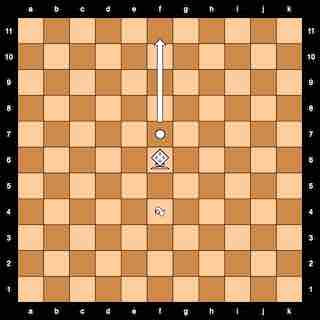
Gate
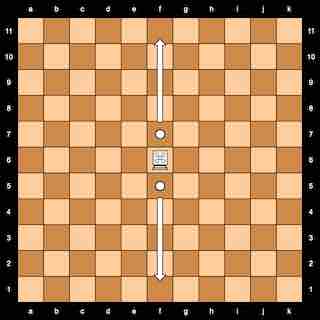
Rook
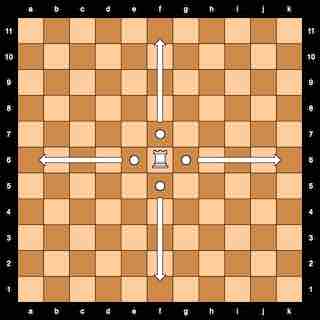
Castle
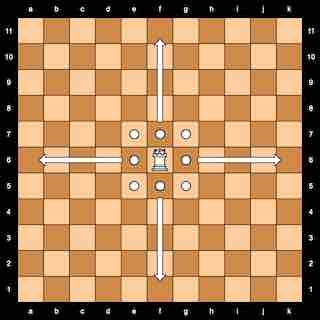
Material Cost
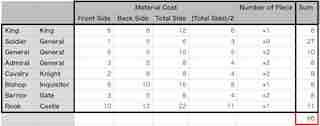
Transformed Side Other Variation

Captain

This is a non-royal piece but moves as a King.
Cavalry transforms to Bishop(b1 and h9) or Captain(h1 and b9).
Bob Greenwade wrote on 2023-09-20 UTC
Thanks, I have just noticed that you are right.
Lunapawn

Lunapawn is able to use a light magic. This is a low cost and 2 Materials. And stronger than a pawn.
It's a very interesting matter. I think capture-only Camel moves is lame.
Soldier
1MtC
fW
Sergeant
3MtC
fsW
Officer
1MtC
fF
Colonel
2MtC
fWfF
Brigadier
3MtC
fbWfF
Admiral
3MtC
fWF
Strategist
4MtC
fsWfF
General
5MtC
WfF
Marshal
5MtC
fsWF
Thank you for your suggestions. I an now wondering the commercialization of some card game. I will use my piece names. Like Shogi Variants, these pieces are translated from Chinese characters, these methods are unusually perfect name. Sorry I am poor English. Do you know the Shogi's piece "Hisya" "飛車". In the chess this is same as "Rook" or "Castle", the shape of Rook is like a castle, but in Japanese "Flying Vehicle". I think "Casle" is never "Vehicle". So I think this is not smart naming by translation from Chinese characters.
King
6MtC
WF
Lord
10MtC
WFDA
Overlord
16MtC
WFDAG
Emperor
21MtC
WWFFDAHG
Queen
16MtC
WWFF
Prince
8MtC
W2F2

Princess
11MtC
W3F3
Elderking
13MtC
W4F4
Noble
5MtC
fbWFfbD

Baron
6MtC
fbWFA

Viscount
8MtC
WFD
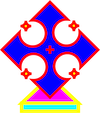
Count
8MtC
WFA
Duke
9MtC
fbWFfbDAfbH
Marquis
9MtC
fbWFfbDAG
Secretary
11MtC
fbWFfbDAfbHG
Minister
14MtC
WFDAH
Grand Duke
12MtC
WFDAG
Citizen
2MtC
mW

Villager
1MtC
mF
Boy Herder
1MtC
mfWmbF
Child
1MtC
mfFmbW
Student
2MtC
msWmF
Infant
1MtC
msW
Child Carer
2MtC
sW
Teacher
3MtC
sWmF
Lecturer
3MtC
msWF
Butler
4MtC
sWF
Maid
3MtC
mWmF
Backpacker
2MtC
mfbWmF
25 comments displayed
Permalink to the exact comments currently displayed.

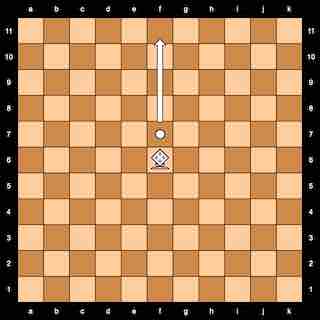
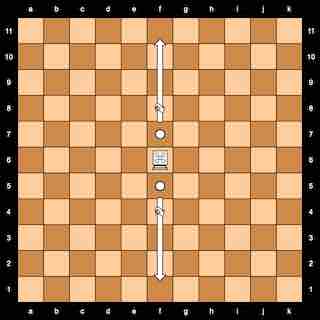
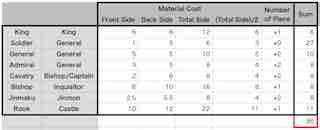
Because I thought that the movement of the piece and the name of the piece would make sense. Also, I split the thread because I didn't know how to paste multiple pictures at the same time.